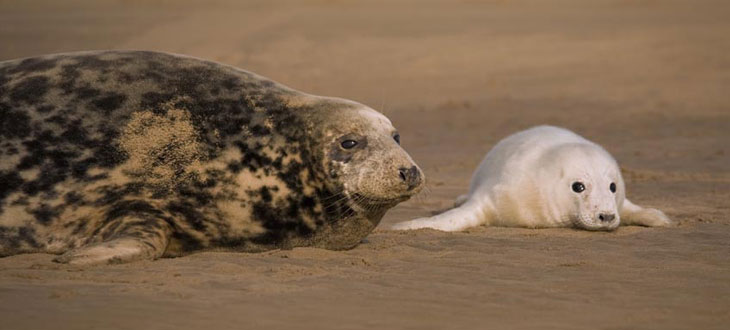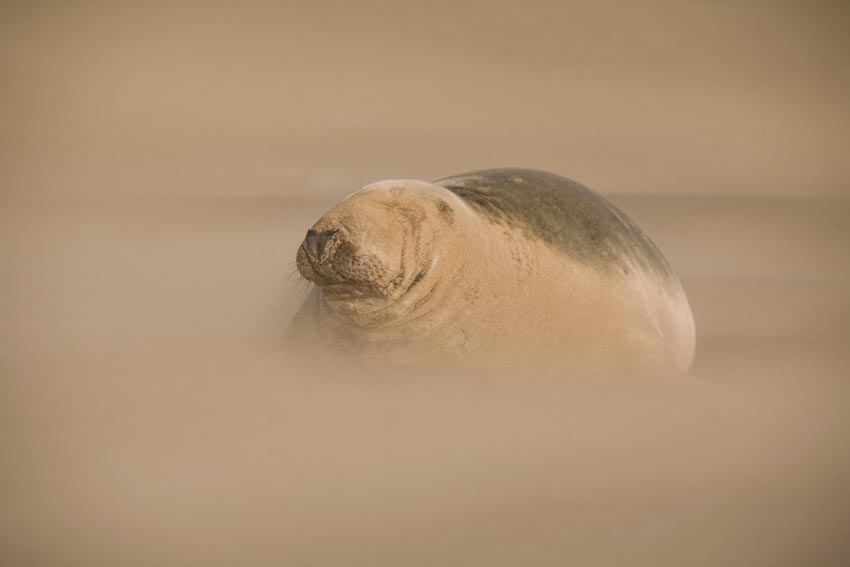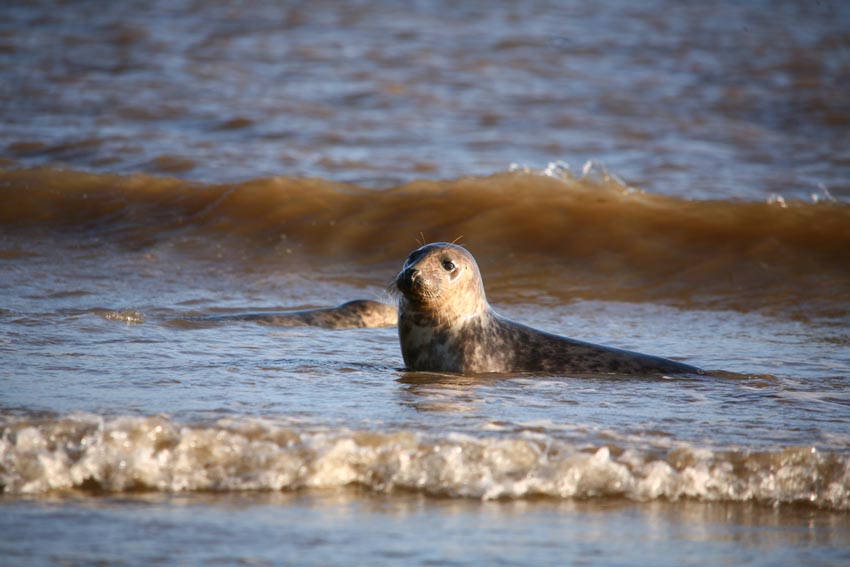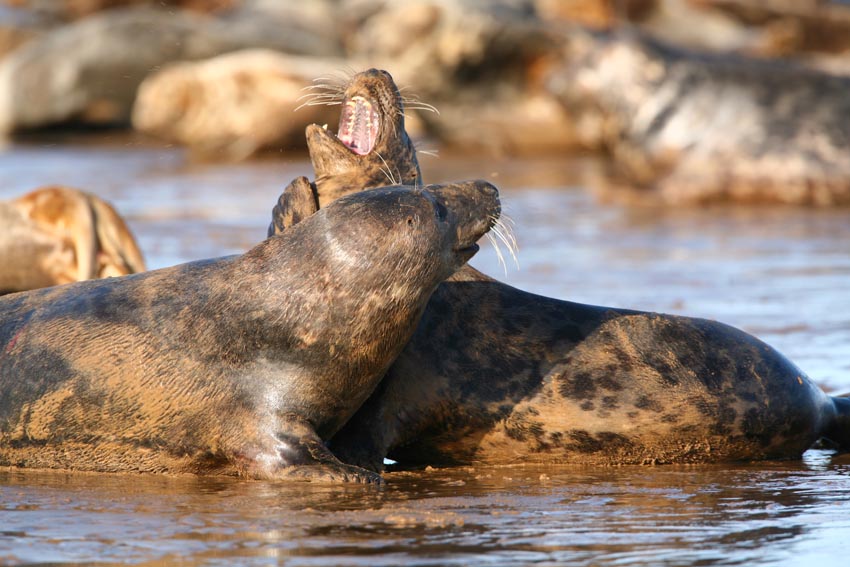Donna Nook is a National Nature Reserve stretching for six miles and lies on the east coast of England. Made up of dunes, salt marshes and inter-tidal areas, it provides the perfect habitat for grey seals as they come to breed and bask in the autumn sunshine. In the UK, Donna Nook provides the best opportunities to watch and photograph grey seals as they gather on the vast sandbanks.
When to visit
The seals arrive in the area between mid-October and early November and remain there until December. If you plan to walk out to the seals (and it's a long walk) it's best to visit at the weekend as the RAF also use the area as a bombing range during the week, and that's directly between the car park and the seals!
Behind the images
I arrive early in the morning and the sun is still pretty low. One of the advantages of shooting in autumn/winter is the late mornings. Having been here before I know what to expect - about a 1 mile walk through the sandbanks to the seals. The selection of camera gear when a long, and hard walk, is essential. One long lens, and standard zoom, wide-angle zoom and a couple of bodies, the usual mixture of batteries and memory cards and, of course, the obligatory tripod - essential when using a long lens all day. The camera gear is packed into a sturdy camera backpack which is ideal for this sort of shoot. It's advisable to wear lots of layers as they wind can be pretty strong out there and can often be very cold.
As I draw nearer to the seals, I can start to see them as small lumps in the distance - the first time I know for sure that this isn't going to be a wasted trip! Understanding animal behaviour is an important part of wildlife photography and I spend some time just watching seals. Some of this knowledge can be taken from books and the internet but there's nothing quite like being there first hand. The weather can be changeable at Donna Nook but today it seems to be pleasant, still with the sun lying low creating a lovely warmth to the area. I tend to arrive at a location with pre-conceived ideas about the pictures I would like to capture so I set my cameras up and start exploring the seals, looking to isolate individual subjects at first. It's important to remember that these are wild animals - used to people, yes - but wild nonetheless and they can be unpredictable in nature. I start by keeping my distance and then gradually get closer as I and the seal builds in confidence. The long lenses, such as the 500mm I had, are good for isolating the subject as they through the background out of focus, aiding composition. Before long I was witnessing a mini sand storm, with sand almost coving a few seals close by to me. I had seen pictures taken in these situations before but had never had the opportunity to do so myself. At that very moment, the sun poked out from behind a cloud to create a beautiful light. Needless to say, a few (hundred) pictures were taken in very quick succession.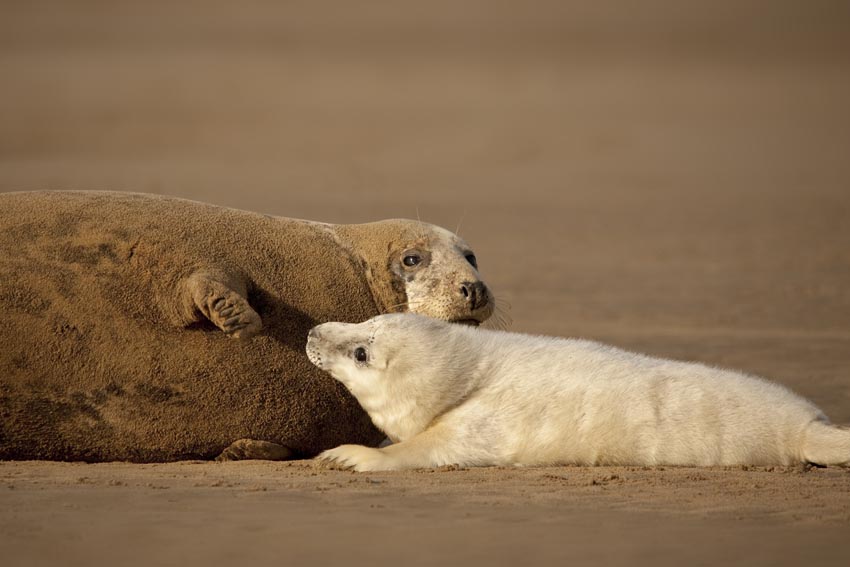
As things settled down again, I moved on to capture mother and pup shots. It's often hard to imagine but many of the pups you see here are just a few hours old, but perfectly formed and seemingly full of energy and knowhow. We'll come on to this shortly but it's so important to respect the seals and use common sense when photographing them. Never get between a mother and pup and if the animal looks disturbed, move away.
Walking further out towards the sea opens up new pictures - pictures of the seals swimming and fighting. The latter allow for some great action photography with water splashing up amongst the teeth and claws of the fighting animals. Having spent some time by the sea, I move back inland slightly with a view to try shorter focal length lenses, getting as close as possible to the seals and capturing a different type of picture. The pups tend to be happiest to oblige with this. One has to be very mindful of getting close to pups if their mother is close by. As I've said before, don't get between the two! Move in slowly stopping occasionally to make sure the pup doesn't look disturbed. I was able to take pictures with a 17mm lens showing the habitat surrounding the seal - a type of image which isn't seen too much. This however was close enough and after a few frames the seal began to show me he'd had enough. With that hint, I moved backwards slowly to a safer distance. It's very important to be quick when getting up close to a seal. If you remain close to them for too long, the mother may not return to feed the pup resulting in obviously devastating consequences. These animals look sweet and gentle but they have razor sharp teeth and claws and are not afraid to use them if pushed. Before long, the tide starts to make its way in and the light levels begin to drop so I decide to head back. The walk back tends to take longer then the one out due to being "on the go" all day so I allow plenty of time to get back to the car before it gets too dark. Once back to the car spend some time cleaning the camera gear, wiping clean any salty water and sand. The only thing that remains to do before driving home is to buy a hot cup of coffee from the car park cafe!
Welfare
Visitor number at Donna Nook have gown hugely in recent years. What used to be a handful of professional photographers taking pictures there have grown into hundreds - every day. Many photographers lack the fieldcraft to approach the seals without disturbing them. If approached too closely or incorrectly, many mothers will become stressed rallying close to their pups, snarling and even attacking in defence. Less experienced mothers will turn tails and flee, leaving their pups to negotiate the gauntlet of photographers and dangerous bull seals alone. Grey seal mothers rely on their blubber reserves and do not leave their pups throughout the seventeen or so days from birth to weaning unless they are disturbed. Consiquently, grey seals only have crude pup recognition mechanisms and often fail to relocate and identify their pups, especially their scent is blended with those of neaby photographers. If mothers fail to find their pups, or cannot get back to pups surrounded by photographers, the pups will certainly become malnourished and die. Furthermore, stressed mothers have less time and energy to devote to suckling their pup. As pup fat reserves correlate with survival, the offspring of stressed mothers are significantly less likely to survive out at sea.
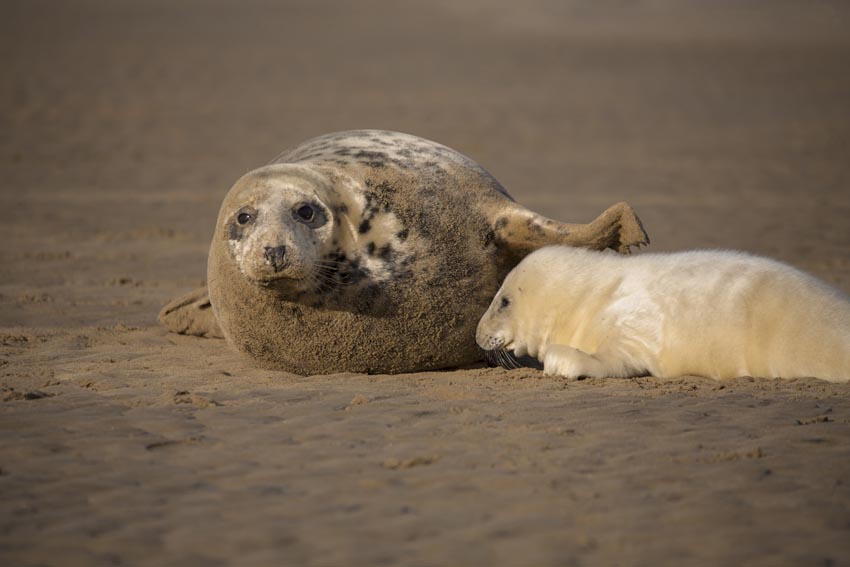
Safety
Many years ago I heard of a dog walker taking his two Alsatians for a walk along the mudflats of Donna Nook. The man, who can only be described as an idiot, decided to take his dogs of their leads. One was killed by a seal instantly and the other was so badly injured it had to be put down the next day. Alsatians are big dogs and they move quickly. Think what a seal could do to you and I. Seals have an appearance of being placid and friendly creatures however they are incredibly strong with razor sharp teeth and claws. As with any type of nature photography, your image is never as important as the subject so if it looks in any way disturbed or upset, move away. Never walk between a mother and pup as the mother will assume you're trying to take her pup away and will cause you some serious harm. The bulls are very territorial creatures and will attack if provoked so be mindful when you're near them. If you do choose to approach a seal - and just because I did doesn't mean I recommend you do it - do so with caution. Move slowing, constantly monitoring if the seal is becoming agitated. If it is, move away. Don't stay close to them for long, as the mother may not return to feed the pup resulting in obviously devastating consequences. Above all, just use your common sense - at least more than the man did with his Alsatians.
What to take
Long lens (around 400mm to 500mm)Shorter zoom lens
Wide-angle lens
Sturdy tripod
UV filters to protect the lens from spray and sand
Backpack
Study walking shoes
Warm clothes

